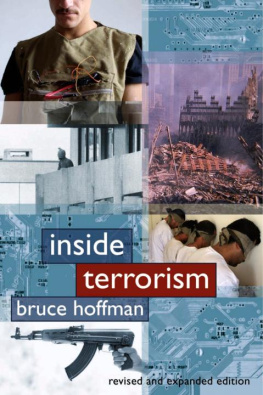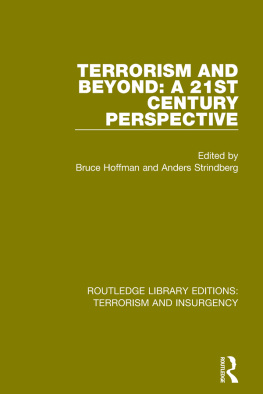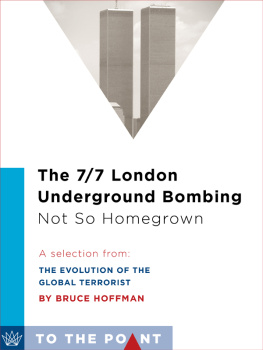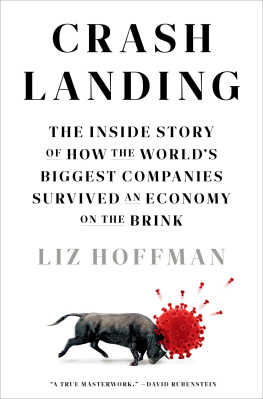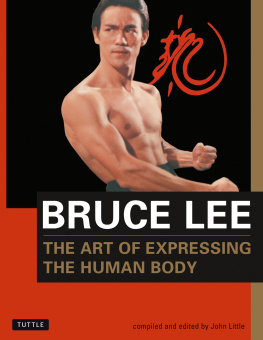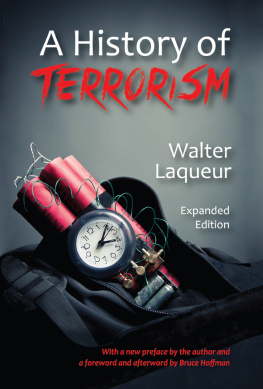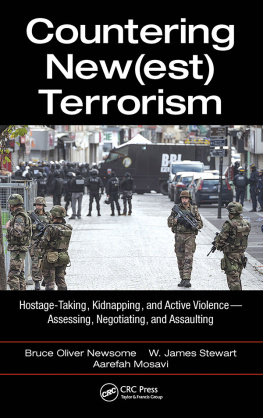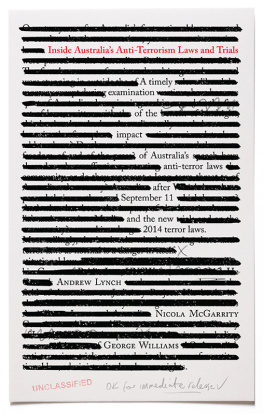Bruce Hoffman - Inside Terrorism
Here you can read online Bruce Hoffman - Inside Terrorism full text of the book (entire story) in english for free. Download pdf and epub, get meaning, cover and reviews about this ebook. year: 2011, genre: Religion. Description of the work, (preface) as well as reviews are available. Best literature library LitArk.com created for fans of good reading and offers a wide selection of genres:
Romance novel
Science fiction
Adventure
Detective
Science
History
Home and family
Prose
Art
Politics
Computer
Non-fiction
Religion
Business
Children
Humor
Choose a favorite category and find really read worthwhile books. Enjoy immersion in the world of imagination, feel the emotions of the characters or learn something new for yourself, make an fascinating discovery.
- Book:Inside Terrorism
- Author:
- Genre:
- Year:2011
- Rating:5 / 5
- Favourites:Add to favourites
- Your mark:
- 100
- 1
- 2
- 3
- 4
- 5
Inside Terrorism: summary, description and annotation
We offer to read an annotation, description, summary or preface (depends on what the author of the book "Inside Terrorism" wrote himself). If you haven't found the necessary information about the book — write in the comments, we will try to find it.
Inside Terrorism — read online for free the complete book (whole text) full work
Below is the text of the book, divided by pages. System saving the place of the last page read, allows you to conveniently read the book "Inside Terrorism" online for free, without having to search again every time where you left off. Put a bookmark, and you can go to the page where you finished reading at any time.
Font size:
Interval:
Bookmark:


Bruce Hoffman


For my parents
ix
xv
 'his sequel to Inside Terrorism was written between March and July 2005. My original intention was simply to update and refresh a work that had retained both its relevance and its acuity despite having first been published in 1998. Once I became engrossed in these revisions, however, it soon became clear to me that a more extensive treatment of the trends and developments in terrorism that had unfolded since September 11, 2001, was needed. Before I knew it, my initially modest intentions had produced some seventy thousand new words-an amount nearly equal to the first edition's total word length.
'his sequel to Inside Terrorism was written between March and July 2005. My original intention was simply to update and refresh a work that had retained both its relevance and its acuity despite having first been published in 1998. Once I became engrossed in these revisions, however, it soon became clear to me that a more extensive treatment of the trends and developments in terrorism that had unfolded since September 11, 2001, was needed. Before I knew it, my initially modest intentions had produced some seventy thousand new words-an amount nearly equal to the first edition's total word length.
That I was able to write so quickly and effortlessly is perhaps a reflection of the solid analytical foundation that the first edition of Inside Terrorism provided. Readers will recall its central theme that the nature and character of terrorism was changing because new adversaries with very different rationales and motivations had emerged to challenge the conventional wisdom on terrorists and terrorism. We were therefore at the dawn of a new era of terrorist violence, the first edition had concluded, even bloodier and more destructive than before. The attacks on 9/11 clearly validated that conclusion. Indeed, on that day long-standing suppositions that terrorists were more interested in publicity than in killing and that terrorists who justified violence with theological imperatives were no more bloody-minded than their secular counterparts were swept aside in a deafening crescendo of death and destruction. Since then, the connection between terrorism motivated by religion and higher levels of lethality has been demonstrated repeatedly by the succession of suicide terrorist attacks that have occurred in places as diverse as Israel and Indonesia and Moscow and Mombasa. A new chapter of this expanded work accordingly analyzes this phenomenon in detail, assessing the reasons for suicide terrorism's increased popularity as a terrorist strategy and tactic and exploring the means and policies required to counter it.
The other completely new chapter in the book focuses on terrorist use of the Internet and other contemporary, cutting-edge communications technologies. It describes how terrorists are now able to bypass traditional print and broadcast media via the Internet, through inexpensive but professionally produced and edited videotapes, and even with their own dedicated 24/7 television and radio news stations. The consequences of these developments, the chapter argues, are as far-reaching as they are still poorly understood, having already transformed the ability of terrorists to communicate without censorship or other hindrance and thereby attract new sources of recruits, funding, and support that governments have found difficult, if not impossible, to counter.
New material, in fact, can be found in every chapter of the book, ranging from a discussion of the lethally indiscriminate bombing campaign mounted by Irish terrorists on the London Underground more than a century ago to the likely repercussions of the ongoing Iraqi insurgency on future terrorist targeting and tactics. Particular attention in the new edition has been paid to such critical issues as the differences and similarities between terrorists and insurgents; the growing threat of terrorist use of chemical, biological, radiological, and nuclear weapons; and the likely future trajectory of al Qaeda-including a detailed assessment of the reasons for its continued resilience, resonance, and longevity.
It is no coincidence that I should have begun thinking about and then writing a new edition of Inside Terrorism, for I have recently returned (albeit part-time) to teaching both undergraduates and graduate students. I should therefore like to thank all the students whom I have had the privilege to teach over the past three years at three unique and world-class institutions devoted either to the study of terrorism specifically or to defense and security studies in general.
The Combating Terrorism Center at the U.S. Military Academy in West Point, New York, helps ensure that new generations of U.S. Army officers are well schooled in the theory and practice of terrorism and counterterrorism and insurgency and counterinsurgency. I am continually humbled and honored by the opportunity to teach and also learn from these outstanding young men and women who often within months of our class literally are in the front lines of the war on terrorism, commanding troops fighting in Iraq and Afghanistan, among other places.
No less important to the intellectual vitality that I hope informs this book are the graduate students I have had the pleasure of teaching in the Security Studies Program (SSP) at Georgetown University in Washington, D.C. The diversity of their views, backgrounds, and professional experiences has appreciably enriched my understanding of, and knowledge about, terrorism. The research assistance provided by one of those students, Mr. Weimeng Yeo, was immensely helpful to me in completing this work. No less critical were the translations of original Japanese-language sources concerning Aum Shinrikyo and the 1995 nerve gas attack on the Tokyo subway provided by another SSP student, Ms. Mayuka Yamazaki.
Finally, I am indebted to Ambassador Barry Desker, director of the Institute of Defence and Strategic Studies at Nanyang Technological University in Singapore, and to Professor Rohan Gunaratna, of that institute's International Centre for Political Violence and Terrorism Research, for providing me with an extraordinarily convivial setting in which both to finish this book and to teach part of a novel course on counterterrorism and counterinsurgency. The students in that class, hailing from at least a dozen different countries, opened my eyes to a range of issues and concerns specific to Asian security and stability.
Perhaps my greatest debt, however, is to James A. Thomson and Michael D. Rich, respectively president and CEO and executive vice president of the RAND Corporation. Just a week before the August 1998 bombings of the U.S. embassies in Kenya and Tanzania, they offered me the opportunity to return to RAND. The timing could not have been better or more prescient. RAND, an independent, objective, nonpartisan research institution, and especially its Washington, D.C. office, have provided an ideal base from which both to study terrorism and to observe the formulation and implementation of counterterrorism policy. Both Jim and Michael were enthusiastic supporters of both the first edition of Inside Terrorism and the revisions and expansion undertaken in this work.
Font size:
Interval:
Bookmark:
Similar books «Inside Terrorism»
Look at similar books to Inside Terrorism. We have selected literature similar in name and meaning in the hope of providing readers with more options to find new, interesting, not yet read works.
Discussion, reviews of the book Inside Terrorism and just readers' own opinions. Leave your comments, write what you think about the work, its meaning or the main characters. Specify what exactly you liked and what you didn't like, and why you think so.

